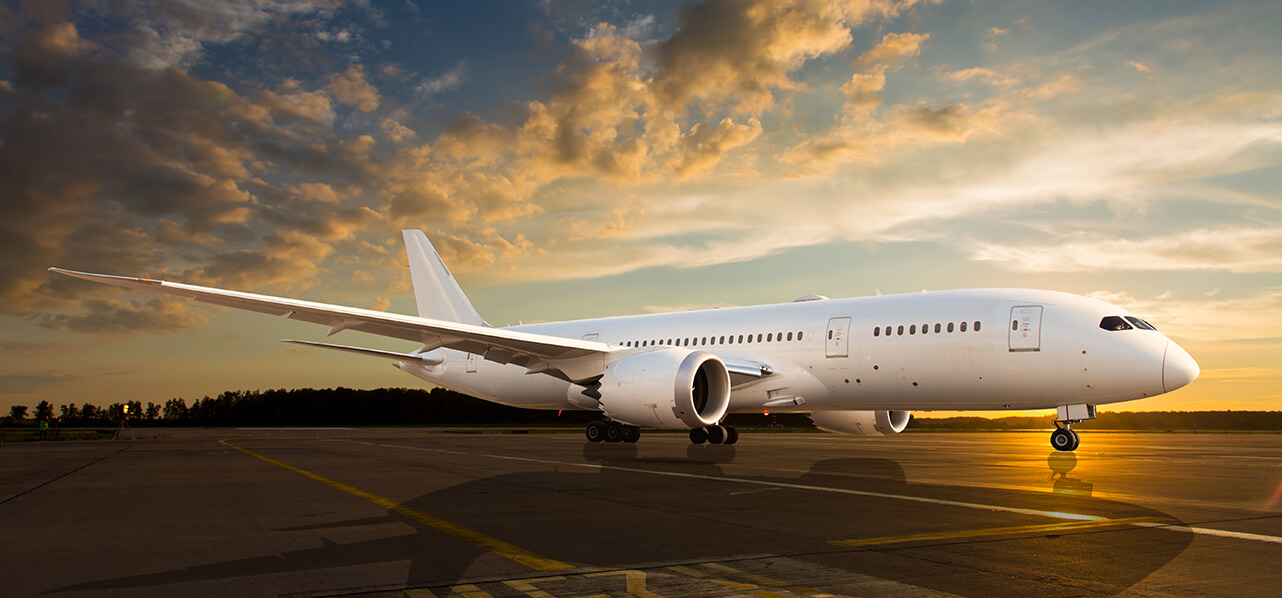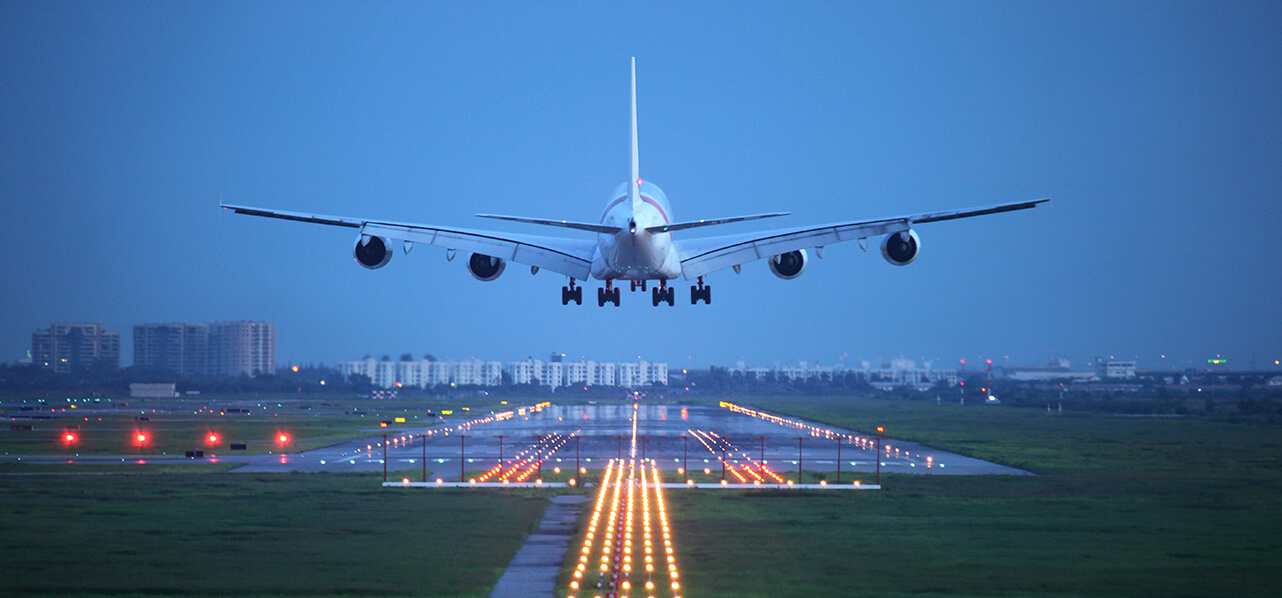"The growing use of an airport-by-airport market definition approach by the EC makes it an essential consideration in pre-merger/pre-acquisition planning."
In part this is a regulatory and procedural matter, and in part a competition question. Specifically:
a) When an airline fails or is about to fail, what is the process by which its airport slots are removed from that airline and end up with one or more other airlines? There are regulatory processes, involving slot coordinators, to be followed, and the result may be slots returning to a “pool” or allocated to another operator. Monarch’s collapse and the subsequent litigation over its airport slots became a case study in understanding this process.
b) Secondly – and the subject of this briefing: when another aircraft operator acquires slots from a failing airline, other than through re-allocation to it by the slot coordinator, could that be anti-competitive, even without a reduction in competition between airlines at a route level? The answer to that question is yes, as illustrated by Lufthansa’s acquisition of certain Air Berlin assets. That is not to say in each case it will be anti-competitive – each case is individual – but the growing use of an airport-by-airport market definition approach by the European Commission (“the Commission”) makes it an essential consideration in pre-merger/pre-acquisition planning.
This article places the Air Berlin cases in the context of two approaches to market definition and merger analysis in deals, arguing that the more recent use of an airport-by-airport approach – while not universally accepted – adds to the sophistication of merger analysis and should be considered in pre-merger planning.
BACKGROUND
On 15 August 2017, Air Berlin, the second largest German airline, filed for insolvency, its collapse precipitated by Etihad withdrawing financial support. Air Berlin flew for the last time on 28 October 2017[1], until then able to continue operations only thanks to a special loan from the German Government. The insolvency proceedings began on 1 November 2017.
Out of a pool of bidders for Air Berlin’s remains, two airlines – EasyJet (UK) and Lufthansa (Germany) – were selected to negotiate: for EasyJet, an asset purchase including aircraft and slots; for Lufthansa, a share purchase of Air Berlin subsidiaries Niki and LGW, together with a package of slots. EasyJet signed a deal on 27 October 2017, conditional on approval by the EU Commission under the EU Merger Regulation. Lufthansa signed its deal on 13 October, similarly conditional.
When their cases came before the Commission – EasyJet notified on 7 November and Lufthansa on 31 October 2017 – they fared very differently. EasyJet was relatively quickly cleared for take-off on 12 December 2017; Lufthansa remained parked on the apron until it had made concessions sufficient to alleviate the Commission’s concerns about competition, winning clearance only on 21 December 2017.
EasyJet – Case COMP/M.8672
EasyJet sought to acquire twenty-five jets stationed at Berlin Tegel airport and their associated slots, slots at destination airports, overnight parking stands associated with the acquired slots, customer bookings, historic data relating to those assets, and certain aircraft furnishings and related equipment.
The Commission considered whether EasyJet’s expanded landing-slot portfolio at congested airports such as Berlin Tegel would raise barriers to entry for other airlines looking to operate from those airports, which might lead to higher fares for passengers. Noting the ongoing presence of large competing airlines, the Commission concluded that no competition concerns would arise on routes to and from Berlin.[2].
Lufthansa – Case COMP/M.8633
In contrast, Lufthansa’s plan to acquire the Air Berlin subsidiary NIKI met with resistance [3]. Lufthansa – which already owns low-cost Eurowings as well as Swiss International Air Lines, Austrian and Brussels Airlines – originally attempted to acquire 81 out of Air Berlin’s 140 aircraft, including all of Niki’s planes plus its slots. Fearing resistance from the Commission, Lufthansa exercised its agreed option – contained in the SPA – to exclude Niki from the deal if it reasonably considered that by 29 December 2017 it would not get competition clearance.
It was not all bad news, however. The Commission did accept Lufthansa’s improved set of commitments offered for acquiring LGW [4]. Lufthansa agreed to limit the transfer of slots at Düsseldorf airport for the summer season to the number of slots used by two aircraft. Consequently, Lufthansa’s slot holding at the airport would increase by only 1%, while 50% of slots would be held by the airline’s competitors [5].
"Traditionally, airline merger and alliance/JV cases have been determined within the framework of city pairs, otherwise known as origin-destination (OD) pairs."
ANALYSIS
The EU Merger Regulation test and market definition
Under the EU Merger Regulation, the Commission has the power to block a merger/acquisition if it would significantly impede effective competition in the EU’s internal market or in a substantial part of it, in particular by creating or strengthening a dominant position.
To decide this question in the cases before it, the Commission must consider how a transaction changes the degree of competition compared to what would most likely have happened without the transaction. That analysis depends on finding a proper frame of reference within which competition takes place, which involves defining relevant product and geographic markets.
Traditionally, airline merger and alliance/JV cases have been determined within the framework of city pairs, otherwise known as origin-destination (OD) pairs. In taking this approach, the Commission assesses the effects of a transaction on competition for each OD pair separately, which can lead to an individual investigation of the conditions of competition on numerous separate and narrowly-defined markets. But there is a further frame of reference, long disused but now again in favour: the analysis of whether a deal leads to dominance of a market upstream of air passenger services – slots in individual airports – which could disadvantage competitors and ultimately consumers in the downstream market. This airport-by-airport approach is becoming more important in airline merger competition analysis.
Two market definition approaches
In recent years, through its more frequent use of an airport-by-airport analysis of competition between airlines, the Commission has not overturned or even side-lined its historic approach of analysing origin and destination (OD) pairs, which has become the starting point for both airline merger and airline alliance analysis. It has instead re-introduced – with more sophistication – another analytical approach to understanding airline competition. To see the contrast, it is first necessary to explain the traditional approach.
OD pairs approach
A clear example of the traditional OD approach is Ryanair/Aer Lingus III, in which the Commission – for the second time – blocked Ryanair’s takeover attempt of its fellow Irish carrier. Being extremely detailed, the case decision illustrates well the considerations relevant to the traditional market definition approach.
The Commission starts by asking whether a given OD pair forms a relevant market, by assessing the possibilities which are offered to consumers to travel between a given point of origin and destination. Given how many cities are connected to two or more airports, the Commission examines whether flights from or to airports which have sufficiently overlapping catchment areas can be considered as substitutes by passengers, and if so, all such substitutable airports should be included in the market definition.
The question is one of airport substitutability: how much constraint is offered by a flight from Origin “O”, airport 1, to Destination “D”, airport 1, to a flight from O airport 2 to D airport 2. This requires a detailed case-by-case analysis. Passengers’ choice of airport at both origin and destination ends may be influenced by convenience and cost of getting to the airport, the services offered from an airport (flight times, schedules and frequencies), the availability of their preferred airline or extra services such as lounges.
As a first proxy, the Commission considers airports are substitutable for each other if they are within 100km and 1 hour’s drive time from each other for short haul travel. This, the Commission states, is a conservative estimate of an airport’s typical catchment area, such that most passengers would not consider flying from one airport or the other would be manifestly inconvenient. This proxy was disputed in the Ryanair case: Aer Lingus argued for a 200km/2-hour benchmark for leisure and non-time sensitive passengers, yet the Commission kept its preferred benchmark.
In applying the relevant benchmark, the Commission can identify – following detailed individual assessment – which airports are, prima facie, substitutable with each other. From this, the Commission can analyse which routes are competed, as between the merging airlines.

Although by tradition, charter airlines do not sell tickets directly to passengers, this is not wholly true: some charter companies sell “dry” seats (seats without other services packaged) to passengers, as well as seats to tour operators.
It is then relevant to ask whether direct and indirect flights are substitutable for each other. Again, this will depend, in this case, on the duration of the flight – the longer the flight, the more likely an indirect option will be substitutable. The Commission’s general practice has been that indirect or one-stop flights are generally not a competitive constraint to direct/non-stop flights under 6 hours, unless there are exceptional circumstances, such as a high share of indirect flights in the overall market.
It may also be relevant to consider whether – in a particular OD pair, there are separate markets for time sensitive and non-time sensitive passengers: the former tending to travel for business, requiring more flexibility in the tickets and willing to pay a higher price; the latter tending to travel more for leisure, do not require flexibility and will be more price-sensitive.
There may also be some substitution between charter and scheduled. Although by tradition, charter airlines do not sell tickets directly to passengers, this is not wholly true: some charter companies sell “dry” seats (seats without other services packaged) to passengers, as well as seats to tour operators. Consequently, past decisions tended to find charter and scheduled services belonged to separate markets, this will not necessarily always be the case in future.
Finally, there may be scope for substituting other transport modes for air travel, such as high-speed rail.
In each case, the relevance of these factors – airport substitutability (and on what benchmark), direct/indirect, time-sensitive and non-time sensitive, charter/scheduled, intermodal substitution – will vary according to specific circumstances, and will be vigorously debated by the parties and the Commission.
Other recent cases where this approach has been set out in detail include: Alitalia/Etihad (2014); IAG/Aer Lingus (2015); and Qatar Airways/Alisarda/Meridiana (2017).
The result of the OD pair approach in Ryanair/Aer Lingus III was a prohibition decision: the Commission found that the transaction would be likely to significantly impede effective competition in the internal market or a substantial part of it, as a result of the creation of a dominant position of Ryanair and Aer Lingus on 46 routes from and to Dublin, Shannon, Cork and Knock. In the context of its frame of reference, the Commission found Ryanair and Aer Lingus to enjoy a “particularly close competitive relationship” which would be eliminated, and with it, the important competitive constraints that each exercised on the other. It also found the transaction would remove a credible entrant on six routes to and from Dublin and Cork. The commitments proposed to alleviate these concerns were not considered sufficient.
Under essentially the same analytical framework, however, the Commission in 2011 cleared IAG’s acquisition of BMI. One critical difference was over the health of the target company. BMI’s then owner Lufthansa argued – and the Commission accepted – that BMI could not continue operations without a deal. Without the acquisition, the most likely outcome would be its insolvency, and redistribution of its slots. In finding thus, the Commission rejected Virgin’s argument that an earlier sale of BMI slots at Heathrow to IAG changed the target’s prognosis.
In contrast, Ryanair’s argument regarding Aer Lingus was – in short – that Europe’s flag carriers were “inexorably consolidating” and Aer Lingus had merely failed to find a consolidation partner, meaning that it was a “subscale peripheral carrier that is not consistently profitable and cannot grow or compete with much larger carriers in Europe.” This was – by some distance – a different situation to that facing BMI. It was also very different to the Commission’s second analysis of the Olympic/Aegean acquisition in 2013. Having blocked Olympic’s first attempt to buy Aegean, the Commission in the second case performed a detailed “failing firm” analysis, from which it concluded the target’s market exit was inevitable.
The conclusion from these cases is at one level obvious: each case must and will be assessed individually. An OD pair analysis does not pre-dispose the Commission to prohibit or to permit any given airline merger. The question is whether the analysis is in all cases appropriate to the case before it, and – harder to answer – whether a given case is likely to find greater or less favour depending on the framework of reference the Commission.
Airport-by-airport approach
British Airways/British Caledonian
The airport-by-airport approach is not so much new, as renewed. Its origins can be traced at least to the late 1980s acquisition by British Airways of British Caledonian. In the years before the introduction of the first EU Merger Regulation in 1990,[6] there was no “one-stop-shop” giving the Commission priority over mergers whose parties met certain turnover-based thresholds.
Instead, this acquisition was assessed by the UK’s Monopolies and Mergers Commission (MMC), the forerunner of the Competition Commission and today’s unified regulator, the Competition and Markets Authority. Taking evidence from airlines using London’s Gatwick Airport, the MMC found that an airline owning a large portfolio of slots would have an advantage over its competitors. In that case, the acquisition of BCAL would raise BA’s slot portfolio at Gatwick to 31%, a level causing sufficient concern that – in return for recommending clearance of the deal – the MMC extracted a commitment from BA to give up 5,000 slots. The European Commission also extracted concessions, notably to impose a ceiling on BA’s slot portfolio at Gatwick of 25% of total scheduled and non-scheduled slots for four years, as well as limiting BA’s ability to transfer BCAL services from Gatwick to Heathrow.
IAG/BMI
We should ask why the Commission did not reintroduce this approach earlier in its airline merger cases. Certainly, there were those who argued for it. Citing economic theories regarding a “hub premium” that airlines could extract at airports at which they dominate, Virgin argued that IAG would – through acquiring BMI – reinforce its presence at Heathrow and gain additional market power which would lead to various anti-competitive and non-route specific effects. Notably, it could charge higher fares on routes from that airport.

The airport-by-airport approach is not so much new, as renewed.
According to Virgin – as summarised by the Commission – three factors might contribute to a hub premium. First, the ability to control key inputs, such as boarding gates and slots. Where these inputs are scarce, controlling a large share of them might allow incumbent operators to limit the scale of entry and expansion by potential competitors – “slot hoarding”. Secondly, carriers holding many slots can react to competitive situations more flexibly and effectively (e.g. by shuffling slots to different routes) than those with fewer slots. Thirdly, carriers with a strong airport presence can increase fares by exploiting loyalty schemes such as frequent flyer programmes: a passenger would have more flights at an airport on which to earn and burn miles. Fourthly, the ability to shuffle flights allows a major carrier to engage in exclusionary conduct against competitors by moving flights to an entrant’s planned flights, or increasing its frequencies on a route, forcing the new entrant to operate at inefficient levels.
In rejecting Virgin’s plea, the Commission did not attack Virgin’s argument on grounds of principle, but on evidence. It did not contradict the theory of a hub premium at Heathrow,[7] but made its primary argument that IAG would have anyway acquired a significant number of BMI’s slots if that latter had become insolvent in the counterfactual scenario. The relevant question then was whether the number of slots it acquired on top of those counterfactual slots was significant. In the Commission’s view, they were not, and furthermore, these additional slots were reduced by the remedy IAG submitted, which the Commission accepted.
Lufthansa/Air Berlin
The Commission’s current airport-by-airport approach – illustrated by the Lufthansa/Air Berlin case – asks the question: can the enlarged group – because of the transaction and, in particular, its enhanced slot holding – foreclose access to the markets for passenger air transport services? This involves looking at (i) ability to foreclose access; (ii) incentive to foreclose access; and (iii) overall effect on competition. As the Commission stated in Lufthansa/Air Berlin, “[a]n airline’s slot holding at an airport provides a measure of its ability to compete on the passenger air transport market to or from that airport”.
Regarding ability to foreclose, in that case, the Commission found that a large slot holding was advantageous, and that there was a link between the holding of such portfolio and the ability to influence competitors’ access to passenger air transport markets at that airport. The Commission tested whether (i) the slots held post-transaction represented a significant share of airport capacity, in particular at peak times; (ii) the transaction materially changed Lufthansa’s slot holding at the airport, particularly at peak times; and (iii) whether Lufthansa’s slot holding could negatively affect the overall availability of input for passenger air transport markets from or to the relevant airport.
In determining incentive to foreclose, the Commission sought to analyse the market shares of the merged entity in the relevant passenger air transport markets and the relative capacity constraints faced by the merged entity and its competitors.
Early in this decision, the Commission addressed the airport-by-airport market definition argument. Citing market evidence that the OD pair approach did not fully address the effects of the transaction, in particular Lufthansa’s reinforced position at various airports, the Commission agreed, stating that the OD Pair approach would “fail to capture the structural effects on competition”, in part because Air Berlin had ceased operating before the transaction and thus it had exited all OD markets. Thus, unlike IAG/BMI (which the Commission referred to in this case as well), the Commission could not take the approach of looking at OD pairs and airports as alternative frameworks of reference; it was constrained by the absence of an OD pair framework. On the other hand, it correctly identified that the Air Berlin transaction “mainly entails the transfer of slots”.
This suggests not so much a shift in the Commission’s thinking as a refinement of its toolkit: it can use one or both of an OD pair or an airport-by-airport approach, depending on the facts before it.
In Cesky Aeroholding/Travel Service/Ceske Aeroline (2014), the Commission very briefly weighed the use of the OD Pair approach (a demand-side approach) against network competition between airlines (a supply side approach), but came down in favour of OD pairs, “in line with…the Commission’s decision practice”. This case, however, did not present as a slot transfer case, unlike the later Air Berlin cases.
By contrast, in Ryanair/Laudamotion (2018), the Commission noted how, in the two Air Berlin cases, the Commission had adopted the airport-by-airport approach when the target included an important slot portfolio, and the target assets were not being used on any routes. But in Ryanair/LaudaMotion, this did not apply, since the target had published its future flight schedules for the following Summer and Winter IATA seasons. This makes clear that the target carrier need not be insolvent for the Commission to adopt the airport-by-airport approach. The case simply needs to involve a significant slot portfolio.
CONCLUSION
It will not be the case that every airline merger, acquisition or alliance will need to go through two separate analyses – the frame of reference for each case will of course differ. But the airport-by-airport approach is very definitely part of the toolkit and will add further to the sophistication of competition analysis.
This greater sophistication must be borne in mind by airlines planning acquisition activity as it necessarily increases the potential not just for additional pre-merger competition analysis including discussions with competition authorities such as the European Commission. It also increases the range of potential anti-competitive outcomes that may be found and – by shaking up the prior (almost) consensus on how these cases were analysed – increases the likelihood of litigation. As we see with LOT’s current litigation against the Commission’s two decisions involving the Air Berlin assets, the introduction of an airport-by-airport approach has not found favour with all.
This article was authored by Jeremy Robinson, a former regulatory and public law partner in our London office.
[1] https://www.financierworldwide.com/air-berlin-files-for-bankruptcy#.Xa3V1-gzaiM
[2] https://ec.europa.eu/competition/mergers/cases/decisions/m8672_673_5.pdf
[3] https://ec.europa.eu/competition/mergers/cases/decisions/m8633_2370_3.pdf
[4] https://europa.eu/rapid/press-release_IP-17-5402_en.htm
[5] https://ec.europa.eu/competition/mergers/cases/decisions/m8633_2370_3.pdf
[6] Regulation (EEC) No 4064/89: https://eur-lex.europa.eu/legal-content/en/TXT/?uri=CELEX:31989R4064
[7] The Commission did attack the notion of “slot hoarding” (see paragraph 497) but not as a matter of principle, but of practice: the legal requirement to use or lose slots imposes an obligation on a carrier to provide services with those slots, rather than simply hoard them, but this is only an indirect attack, since a large carrier such as IAG operating at a congested airport such as Heathrow is not short of options for how to use slots and keep them out of competitors’ hands.
Related insights
Article



